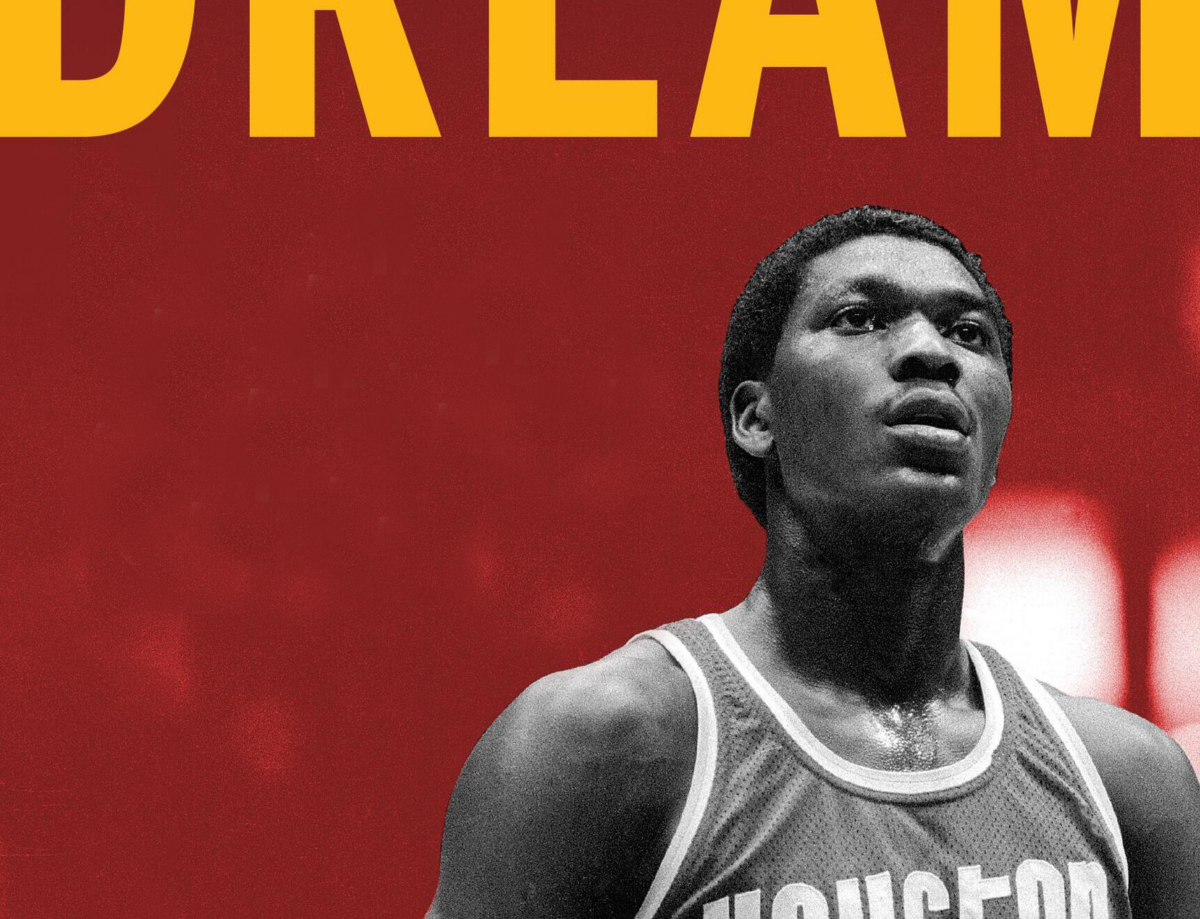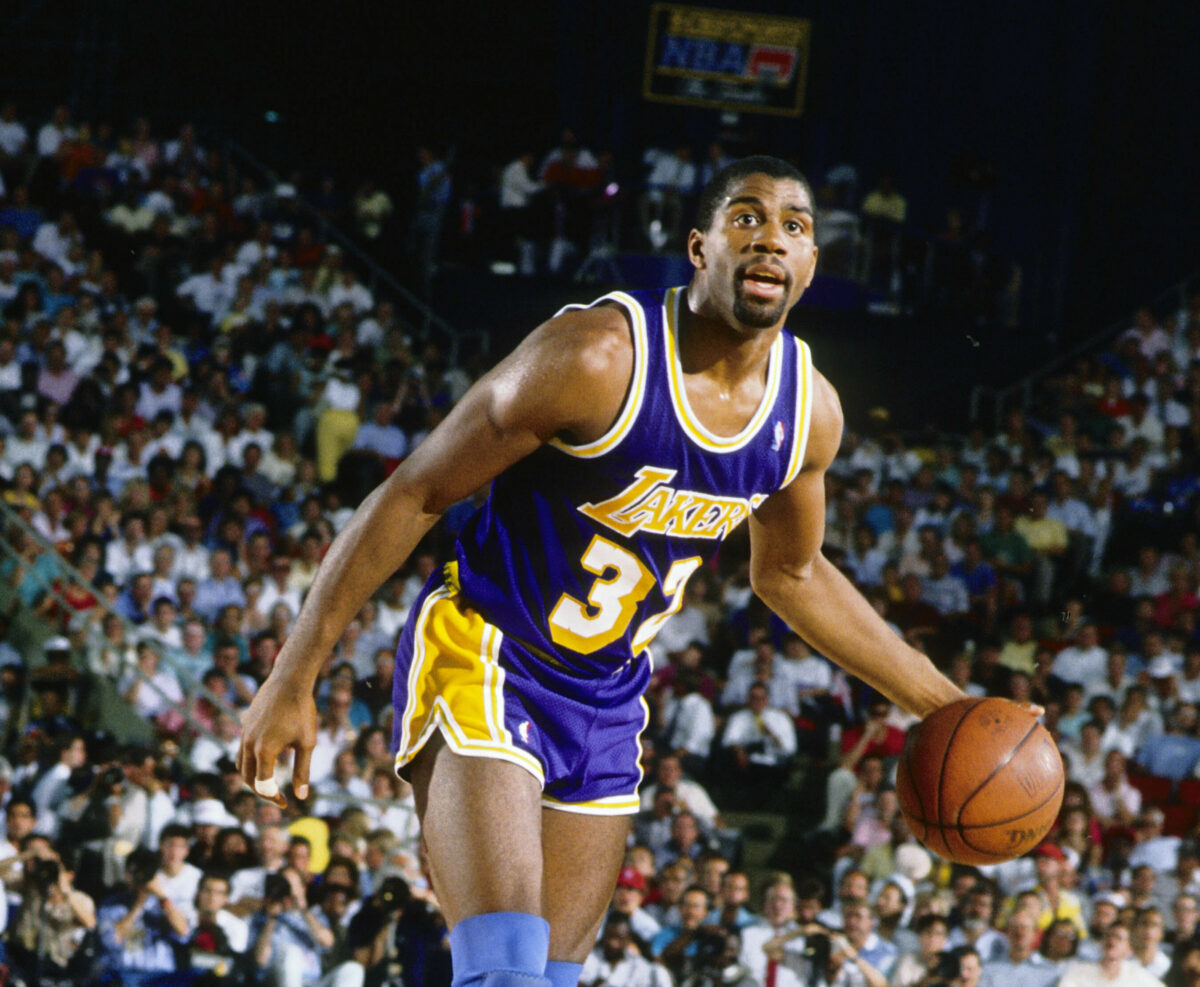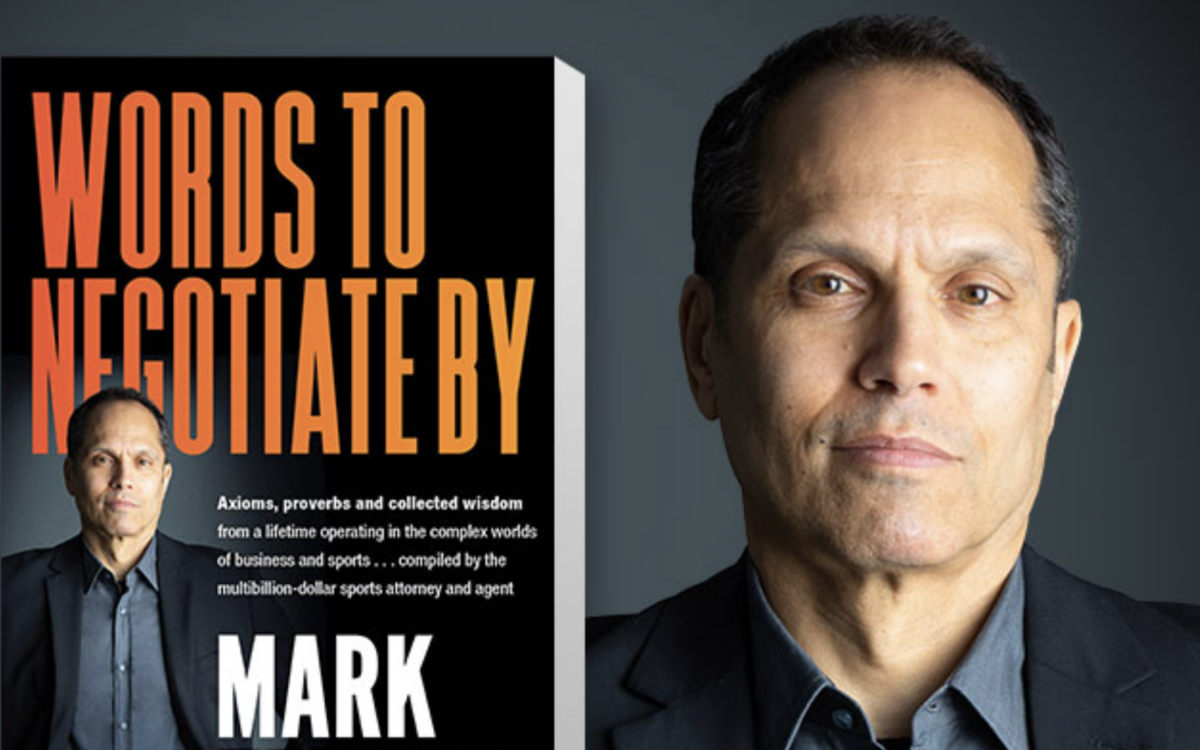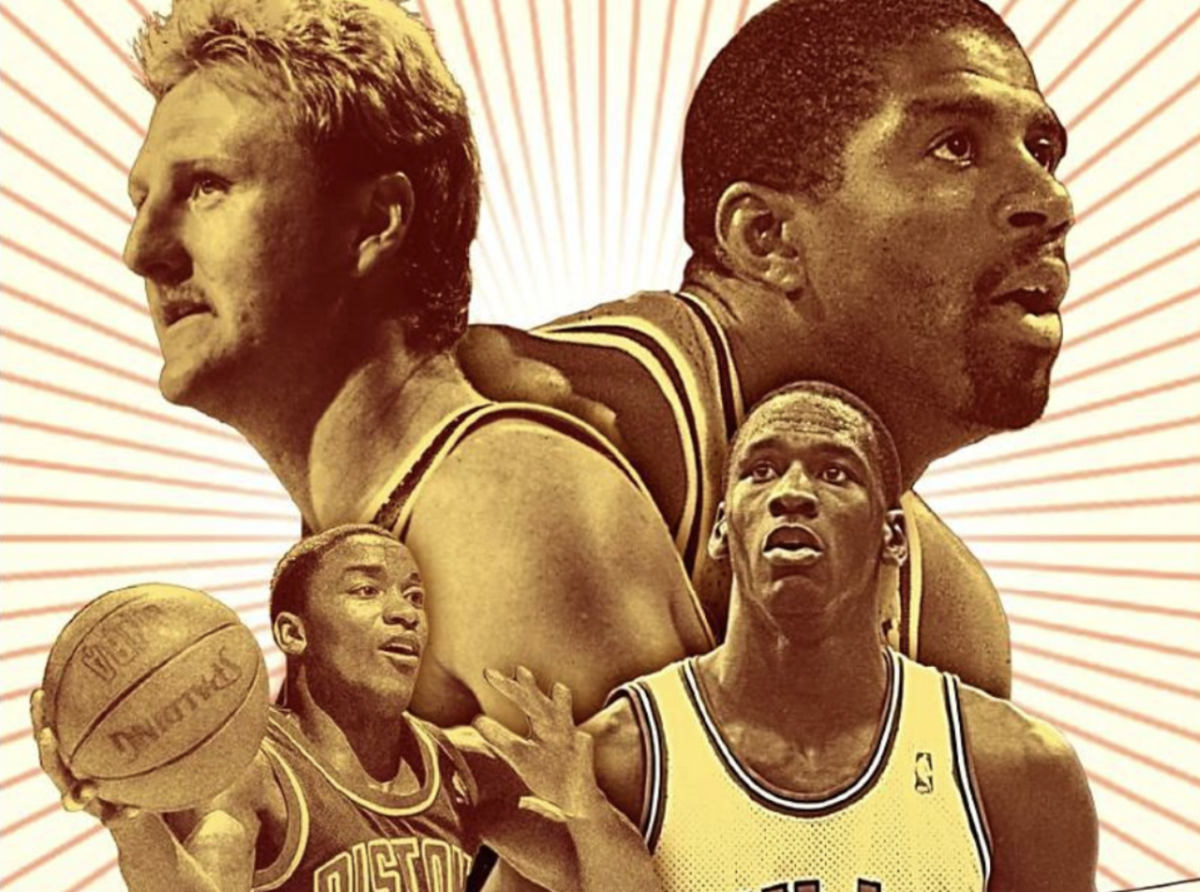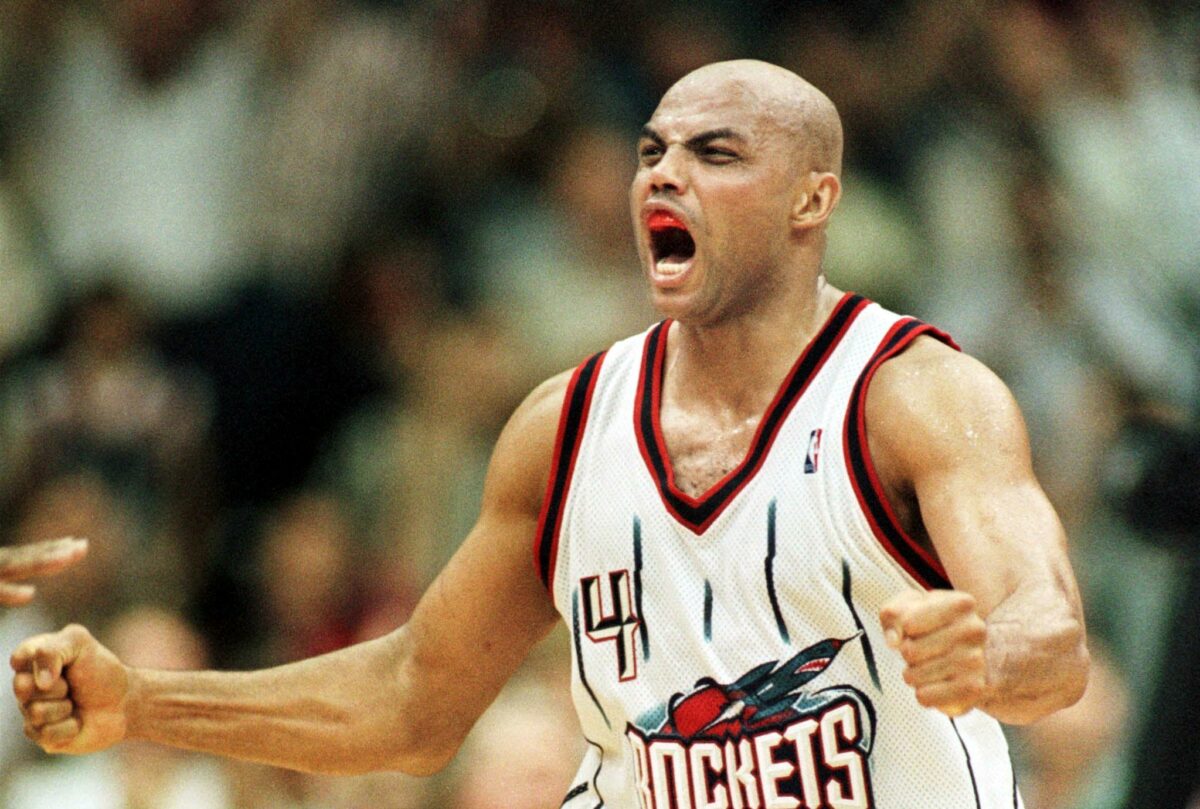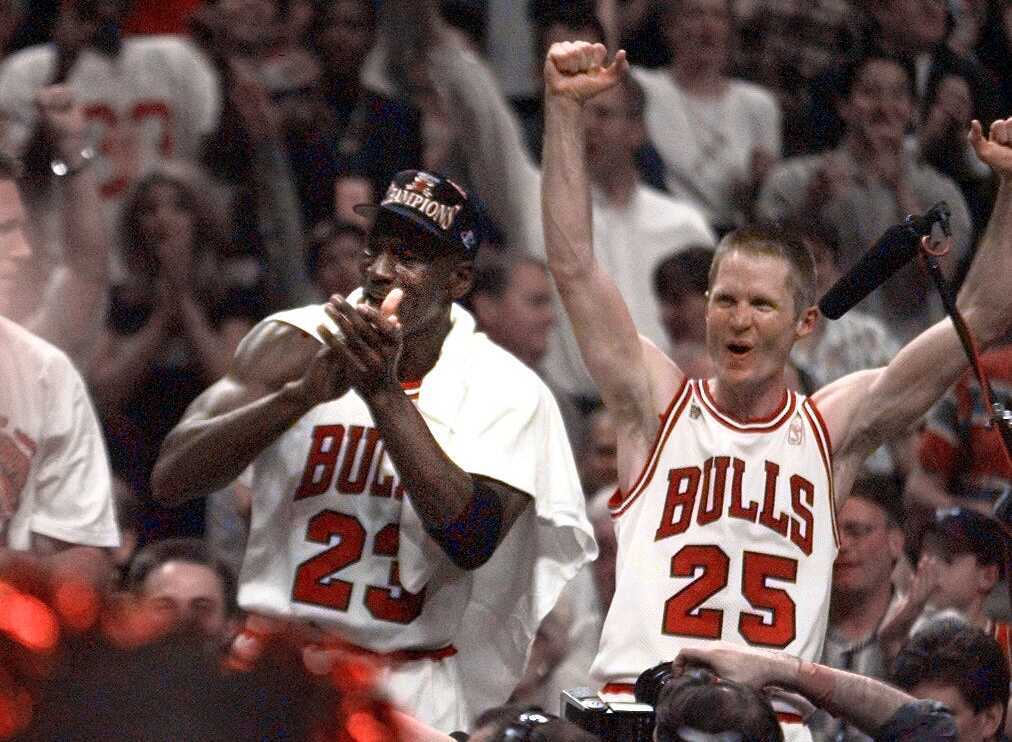Excerpted from the book Dream: The Life and Legacy of Hakeem Olajuwon by Mirin Fader. Copyright © 2024 by Mirin Fader. Reprinted by permission of Hachette Books an imprint of Hachette Book Group, Inc., New York, NY. All rights reserved. You can buy the book HERE.
Nearly every day in the summer of 1981, after his first partial year at Houston, Olajuwon played at Fonde Recreation Center, the spot to play if you were a talented ballplayer in Houston. There were two no-frills courts separated by a blue plastic screen. There was often no air-conditioning. Players frequently played shirts versus skins. Everyone was out for blood. “If you wanted to find out what game you had, you’d come to Fonde,” says James Robinson, Fonde’s current recreation assistant. “If you ain’t got it, you gotta get out. Don’t come back.”
For months, Olajuwon had heard stories of the legendary court and the pros who graced its hardwood, including Rockets players Moses Malone, Robert Reid, Major Jones, John Lucas, Allen Leavell, Caldwell Jones, Joe “Jellybean” Bryant (Kobe Bryant’s father), and Bill Willoughby. The Rockets players, who had made it all the way to the NBA Finals in 1981 before falling to the Celtics, knew that many of the kids who showed up at Fonde couldn’t afford to attend Rockets games, so they’d bring autographed shoes and gear for them. “We welcomed them,” said Reid, who gave an interview for this book before he died in February 2024 at age sixty-eight. “They saw good, hardcore, where’s your mama ’cause I’m gonna put this in your face basketball.”
The first time Olajuwon walked into the gym, he knew he’d have to bring his best: he and his Cougars teammates were trying to prove they were on the Rockets’ level. Olajuwon’s teammates had battled the Rockets players many times before and knew the challenge that lay ahead. “Oh, they actually thought they could beat us,” Leavell says.
Everyone seemed to have the same mindset, regardless of age: You push me; I’ll push you. We’ll both get better. The Rockets players were, in some ways, big brothers to the Cougars players. Fonde was more competitive than Rowe Park in Lagos, Olajuwon quickly realized, but it had the same kind of prestige. If you proved yourself there, you could walk around with a certain amount of respect. Puff your chest out a little farther.

Then he spotted Malone, the center everyone had been telling him about. Big Mo. The NBA’s fiercest rebounder. The one his friend Yommy Sangodeyi had looked up to. Malone was the first player to play professionally directly after high school. He had been the number-one recruit in the country, and hundreds of college scouts hounded him. He was relentless on the glass, scoring at will. He was six feet ten but slender, with incredible quickness for a man of his size. He had unusually small hands, but every rebound was his. He once grabbed thirty-seven boards in a game. But what separated him, Olajuwon soon learned, was his intellect. And his timing. He didn’t wait to box out until the ball was halfway to the basket like most players. He fought for position earlier, as soon as he sensed a teammate was about to shoot. And even more impressive? “He would study the rims,” says Del Harris, Malone’s former Rockets coach, now eighty-seven. “Some rims were real tight. Back then, early on, they didn’t go around and check the rim tension.” Malone knew every detail about every rim and studied every detail about every opponent.
Malone was everything that Olajuwon aspired to be: dominant, hard-nosed, skilled. He had an unshakable confidence, a swagger, that Olajuwon needed, too. Cedric Maxwell, former Celtics star and now a broadcaster for the team, remembers a game in which Celtics big man Rick Robey was guarding Malone. Malone took it almost as an insult. “You guys have Rick Robey on me?” Malone said to Maxwell. “I’m gonna get a hunnit rebounds!”
“A hunnit?” Maxwell said. “You gonna get a hunnit?”
“Yeah. You keep him on me. A hunnit rebounds.”
Olajuwon didn’t yet have that kind of swagger. He looked uncertain, often hesitating on offense. “He was scared of the contact. He didn’t know what to do,” Malone later said. “I worked with him, told him not to be afraid.”
Olajuwon intrigued Malone and the Rockets players, although he was very much still learning. “He didn’t have any clue what he was doing,” says former Rockets guard Allen Leavell, “but his athleticism was off the charts. We knew he could be a great player if he learned the game.” Everyone respected how hard he competed. “He was just this young sponge that had so much courage, and so much desire,” says James Bailey, Rockets forward from 1982 to 1984. Malone began to mentor Olajuwon, teaching him the intricacies of the post: how to set up, how to get the ball, how to be aggressive. Rather than verbally give lessons, Malone taught him by showing him: guarding him daily, embodying the hunger he hoped his protégé would adopt. Malone simply overpowered him. When Olajuwon caught the ball? Smack! Tried to seal him? Smack! Took it strong to the cup? Smack! “[Olajuwon] was struggling,” Reid said. “Big Mo was hitting on him.” But Malone saw potential in Olajuwon. “When [Mo] saw something that could be great,” Reid said, “he pushed it.” And Olajuwon loved the challenge. “Dream never backed down,” Reid said.

In quiet moments between games, Malone would pull Olajuwon aside, offering morsels of wisdom. He took Olajuwon around in his Maserati, and the two would hang out at Frenchy’s Chicken in South Houston. Malone was generous with his protégé as well. He bought Olajuwon stylish clothes and gave him his mint-condition hand-me-downs, including a striking cream-colored sports jacket.
“The thing that the young people forget about today—and I know Moses was taught this, I was taught this, and I’d say 95 percent of athletes that came up in the ’60s, ’70s, and ’80s [were taught this]— is you give back to the game,” says Michael Cooper, former Lakers guard and close friend of Malone. Malone died in 2015. “Whether it’s materialistic, whether it’s spiritual, whether it’s emotional, you always give back. For him to help Hakeem along the way, a young man that I’m pretty sure Moses saw in [him] what we couldn’t see: how great of a player he was going to be.”
Now that he was finally eligible to play, hype swirled around Olajuwon as the 1981–1982 college season began. Much of it was over the top for the newly minted member of the active roster who had yet to play a single minute in a game. “An awesome, sweeping sky hook is implied by his middle name [Abdul] . . . ,” one reporter wrote, referring to Kareem Abdul-Jabbar. “Akeem Abdul Olajuwon has to live with those expectations.”
A sky hook? Olajuwon had yet to develop a consistent jump shot. Conference coaches were stoking the fire, too. One coach was ready to give his two cents, even if he didn’t know Olajuwon’s actual name: “If Abdul is what they say he is,” Texas coach Abe Lemons said, “it’s over for the rest of us.”
Lewis still wouldn’t let Olajuwon speak to the press, so he tried to quiet the chatter himself. “I know damn well the alumni expect too much out of him,” Lewis said. “They’re playing him up like a savior Akeem hasn’t even done anything yet.”
Lewis wasn’t even sure Olajuwon would play. He was brutally honest with Olajuwon, too, telling him privately that he didn’t know if he would ever score a point.
There was also a more pressing concern: Olajuwon was suffering from back spasms, unable to run without grimacing in pain. Sometimes he couldn’t even bend over to pick something up off the ground. His coaches wondered if he was experiencing growth spurts. Maybe he wasn’t used to weight training? Maybe his dorm bed wasn’t big enough and his feet dangled off the end?
Each day before practice, Olajuwon hooked himself onto a machine called the “Rack” that flipped his near-seven-feet frame upside down for ten minutes to stretch his back. He watched as his teammates took the floor, laughing and smiling, and there he was, upside down, looking silly, feeling uncertain of his future. “I had heard rumors that he was never going to play again,” says Ernie Garza, the student athletic trainer. Garza remembers Terry Kirkpatrick, an assistant coach to whom Olajuwon had grown close, telling him that Olajuwon was thinking about returning to Lagos. Garza wasn’t sure if the rumor was true, but he remembered Olajuwon’s pain. “It was debilitating,” Garza says.

The coaches tried to find him the right treatment. They also helped him find a local acupuncturist. Mercifully, after just one session, along with all the stretching and treatment he had been doing at the university, he began to feel relief. The spasms eventually stopped, but Olajuwon had a lot of catching up to do as nonconference play began. He struggled against Seton Hall, getting called for goaltending a couple of times. Otis Birdsong, former Cougars star and twelve-year NBA veteran, was in attendance, wondering how Lewis gave him a scholarship. “Hakeem was terrible,” Birdsong says, laughing. “He couldn’t walk and chew bubble gum.”
But every day, Olajuwon got a little better. His teammates gave him no choice, bumping him and bruising him to help him get stronger. His main foe was Larry Micheaux, nicknamed “Mr. Mean” (“Mean,” for short). One did not want to piss off Mean. Olajuwon battled, but Mean often got the best of him. “Punishing him,” says Michael Young, the forward. That was intentional. “I didn’t want to be easy on Hakeem,” Micheaux says. The two mutually benefited, though. “I had to figure out a way to stop him from blocking my shot,” Micheaux says. Olajuwon caught on quickly, too, and was able to hold his own.
Practices were often more intense than games. Fights sometimes broke out. During one practice Olajuwon caught a fingernail above his right eye and had to get stitches. But he wasn’t always on the receiving end of blows. Once, Micheaux remembers him trying to fight guard Reid Gettys. Micheaux had to tell Olajuwon to back down before he could land a punch. His teammates respected that he played hard and was a workhorse during drills. “Either you fit in, or you fit out,” Micheaux says, “and definitely he fit in.”
He also continued to stand out with his uncanny skills. In one instance, while on the road, coaches spotted Olajuwon kicking a soccer ball around with random students before shootaround. Olajuwon dribbled around imaginary defenders and then bounced the ball off his knees. Then his head. The students stopped, amazed someone so tall could be so agile.
Lewis was furious: “Go get Akeem!” he screamed to Barron Honea, a student assistant coach. Honea said a prayer. Please, Lord, don’t let Akeem sprain his ankle. Fortunately, he didn’t, but the kicking would continue. Another time, before practice, instead of shooting, he stepped on top of the basketball, balancing on one leg while sticking out his other leg. He looked ridiculous, teetering back and forth. One fall could have injured him or, worse, ended his career. He finally stepped off but kicked the ball up toward his shoulder in one motion. His teammates just stared. They had never seen anyone quite like him before.
Excerpted from the book Dream: The Life and Legacy of Hakeem Olajuwon by Mirin Fader. Copyright © 2024 by Mirin Fader. Reprinted by permission of Hachette Books an imprint of Hachette Book Group, Inc., New York, NY. All rights reserved. You can buy the book HERE.
